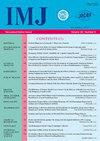INFLUENCE OF MESENCHYMAL STEM CELLS ON EFFICIENCY OF ANGIOGENESIS, STATE OF VASCULAR TONE, INTENSITY OF LIPID PEROXIDATION AND METABOLIC ACTIVITY OF CARDIOMYOCYTES IN EXPERIMENTAL MYOCARDIAL INFARCTION
Q4 Medicine
引用次数: 0
Abstract
In contrast to medical and surgical methods of treatment of coronary heart disease and its complications, cellular cardiomyoplasty is aimed at creating new cells and stable lineages of normally functioning heart tissue. Autologous mesenchymal bone marrow stem cells are a promising source for such cardiomyoplasty. To study the effect of stem cell myocardial transplantation on the processes of its post−infarction state, acute myocardial infarction in laboratory rats was experimentally modeled with subsequent transplantation of autologous mesenchymal stem cells of bone marrow and comparative study in blood serum of cardiovyocytes metabolic activity markers, neoangiogenesis, vessel tonus as well as myocardial lipid peroxidation. The cells were intravenously injected into the necrotized myocardium and left ventricle. The study found that regardless of the method of administration, stem cell transplantation contributes to a significant increase in angiogenic factors, i.e. nitrogen oxide and endothelial growth factor, a significant decrease in vasoconstrictor endothelin−1, the level of TBA−active products and haptoglobin, enzyme activity, namely cardiac ischemia markers, increase in ceruloplasmin. All this indicates positive effects: leveling ischemia by improving myocardial perfusion due to compensatory vasodilation, limiting the rate of lipid peroxidation and stimulating antioxidant factors, improving the energy balance of the myocardium by increasing the level of energy substrates and activation of their aerobic pathways. Thus, cellular cardiomyoplasty improves metabolism and prevents the process of post−ischemic myocardial remodeling. Key words: cardiomyoplasty, mesenchymal stem cells, myocardial infarction, myocardial metabolism.间充质干细胞对实验性心肌梗死血管生成效率、血管张力状态、脂质过氧化强度和心肌细胞代谢活性的影响
与治疗冠心病及其并发症的内科和外科方法不同,细胞心肌成形术旨在创造新的细胞和正常功能心脏组织的稳定系谱。自体间充质骨髓干细胞是一种很有前途的心肌成形术来源。为研究干细胞心肌移植对心肌梗死后状态的影响,采用自体骨髓间充质干细胞移植建立急性心肌梗死实验大鼠模型,对比研究血清中心血管细胞代谢活性标志物、新生血管生成、血管张力及心肌脂质过氧化的变化。将细胞静脉注射到坏死心肌和左心室。研究发现,无论采用何种给药方式,干细胞移植均可显著增加血管生成因子(即氮氧化物和内皮生长因子),显著降低血管收缩剂内皮素- 1、TBA -活性产物和触珠蛋白水平,酶活性(即心脏缺血标志物)铜蓝蛋白增加。所有这些都表明了积极的作用:通过代偿性血管舒张改善心肌灌注来缓解缺血,限制脂质过氧化率和刺激抗氧化因子,通过增加能量底物的水平和激活其有氧途径来改善心肌的能量平衡。因此,细胞心肌成形术可改善代谢并阻止缺血后心肌重构过程。关键词:心肌成形术,间充质干细胞,心肌梗死,心肌代谢
本文章由计算机程序翻译,如有差异,请以英文原文为准。
求助全文
约1分钟内获得全文
求助全文
来源期刊

International Medical Journal
医学-医学:内科
自引率
0.00%
发文量
21
审稿时长
4-8 weeks
期刊介绍:
The International Medical Journal is intended to provide a multidisciplinary forum for the exchange of ideas and information among professionals concerned with medicine and related disciplines in the world. It is recognized that many other disciplines have an important contribution to make in furthering knowledge of the physical life and mental life and the Editors welcome relevant contributions from them.
The Editors and Publishers wish to encourage a dialogue among the experts from different countries whose diverse cultures afford interesting and challenging alternatives to existing theories and practices. Priority will therefore be given to articles which are oriented to an international perspective. The journal will publish reviews of high quality on contemporary issues, significant clinical studies, and conceptual contributions, as well as serve in the rapid dissemination of important and relevant research findings.
The International Medical Journal (IMJ) was first established in 1994.
 求助内容:
求助内容: 应助结果提醒方式:
应助结果提醒方式:


